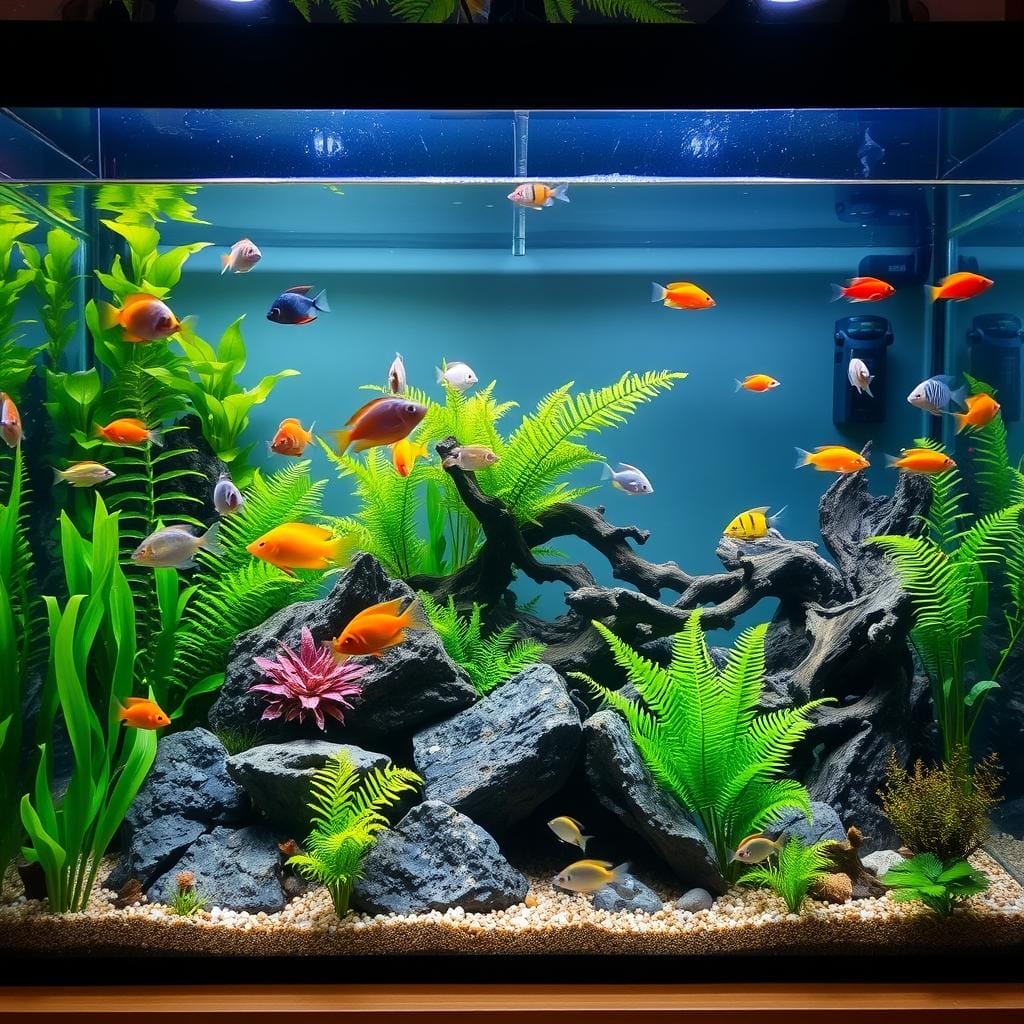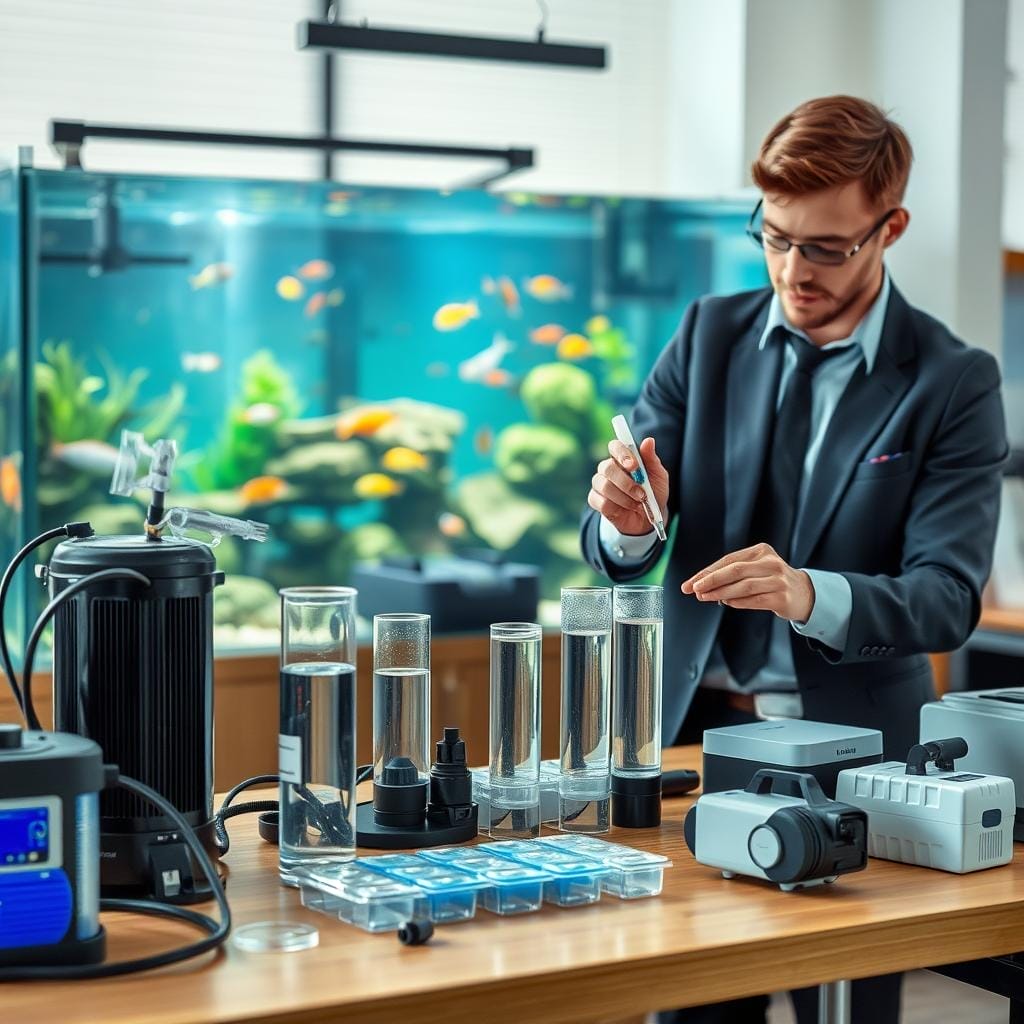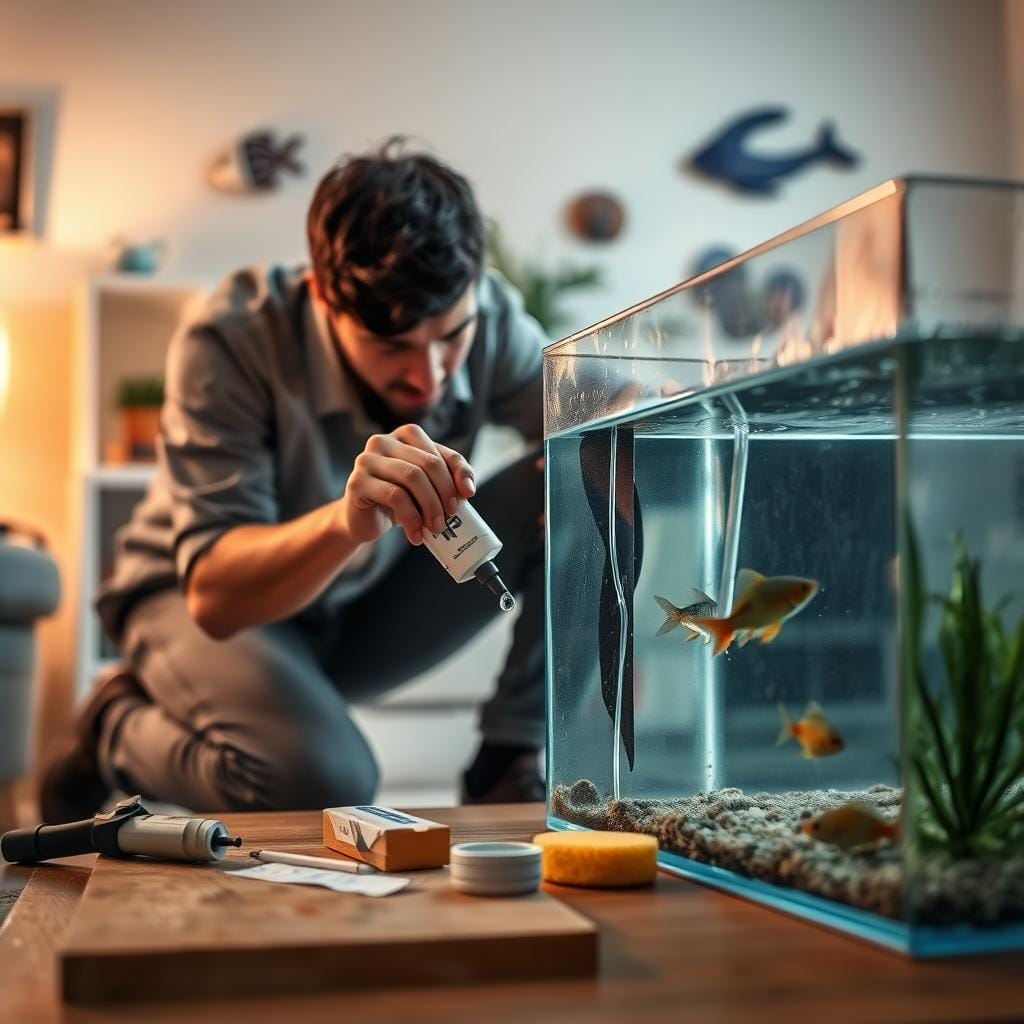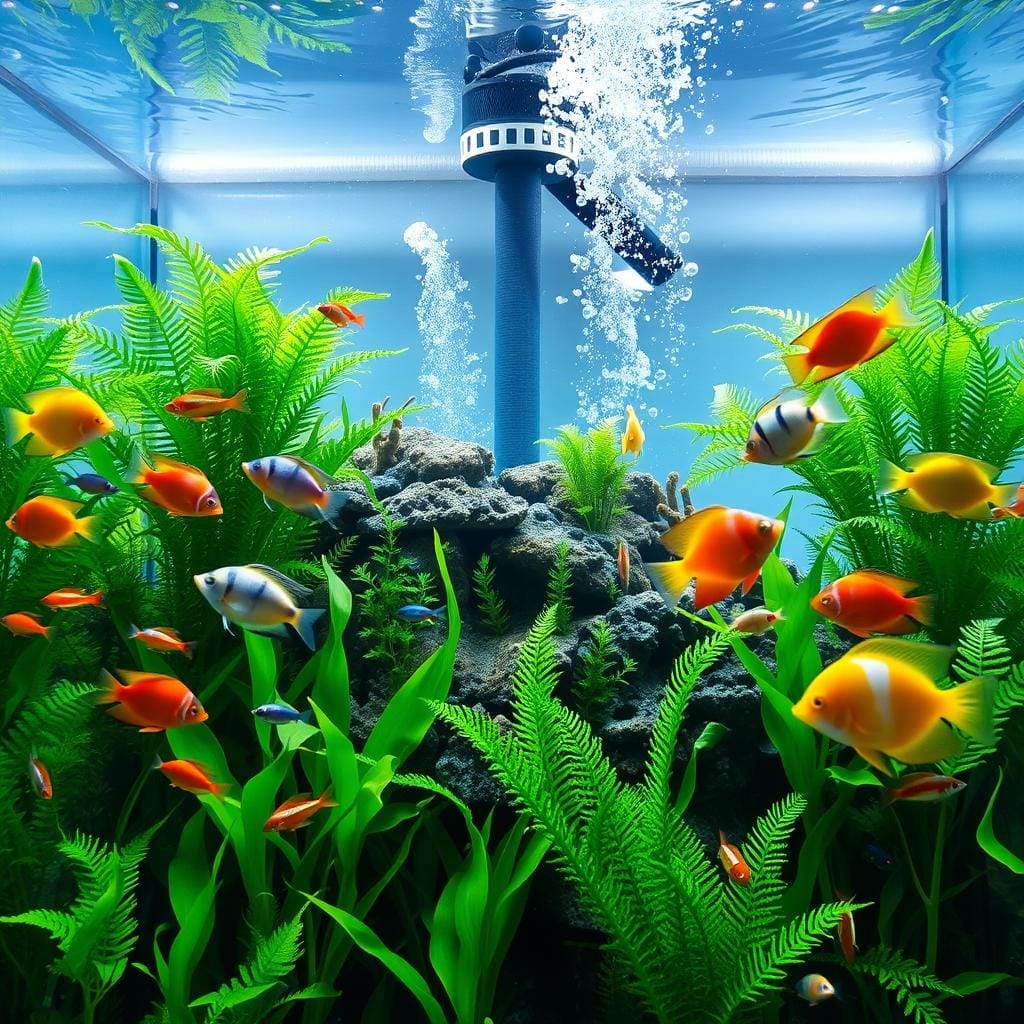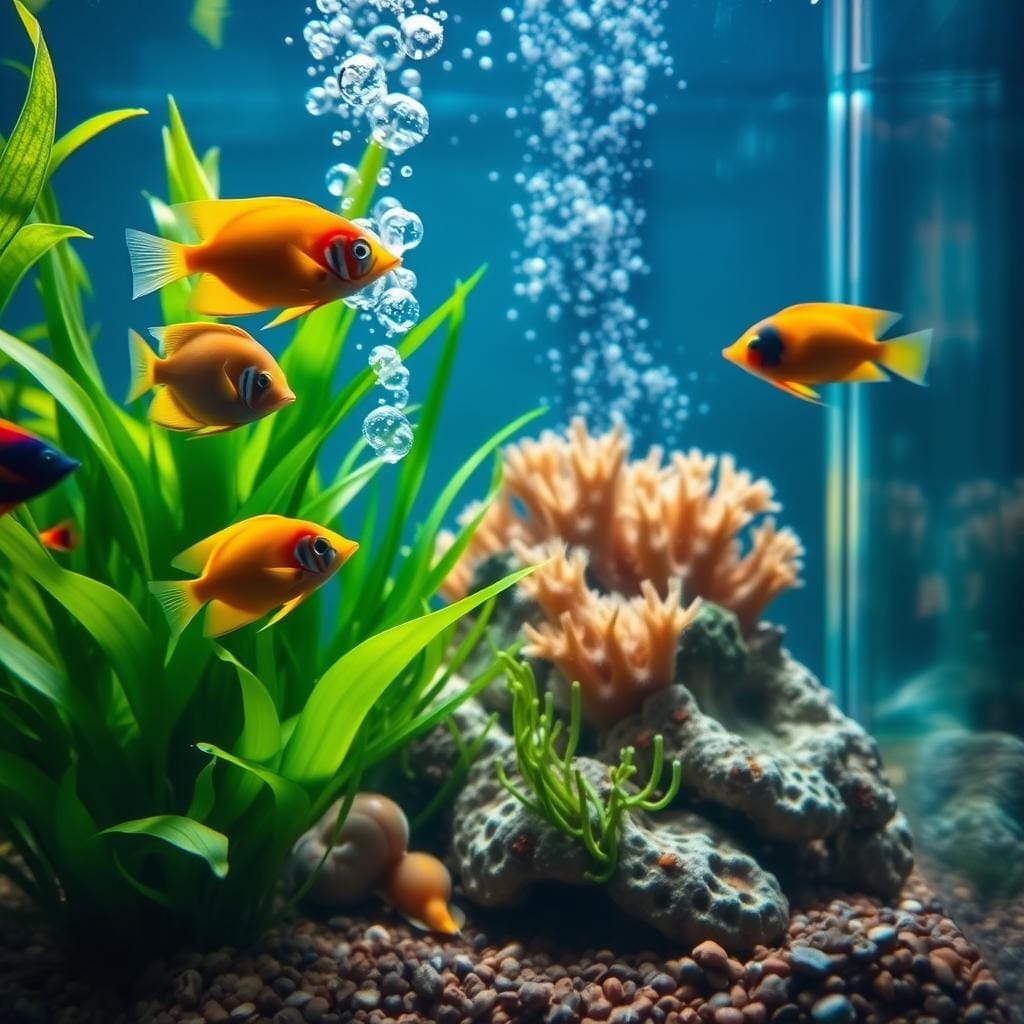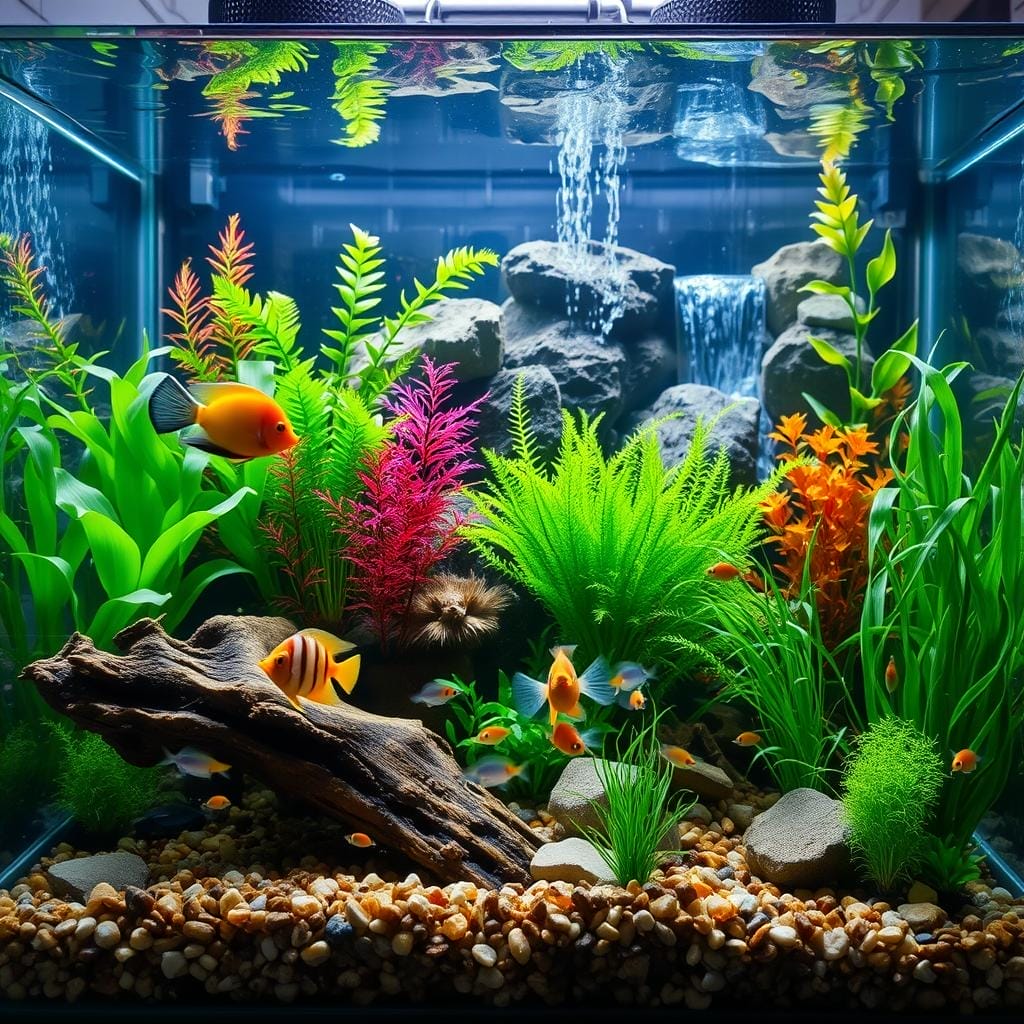
Biological Filtration: The Key to Thriving Aquatic Life
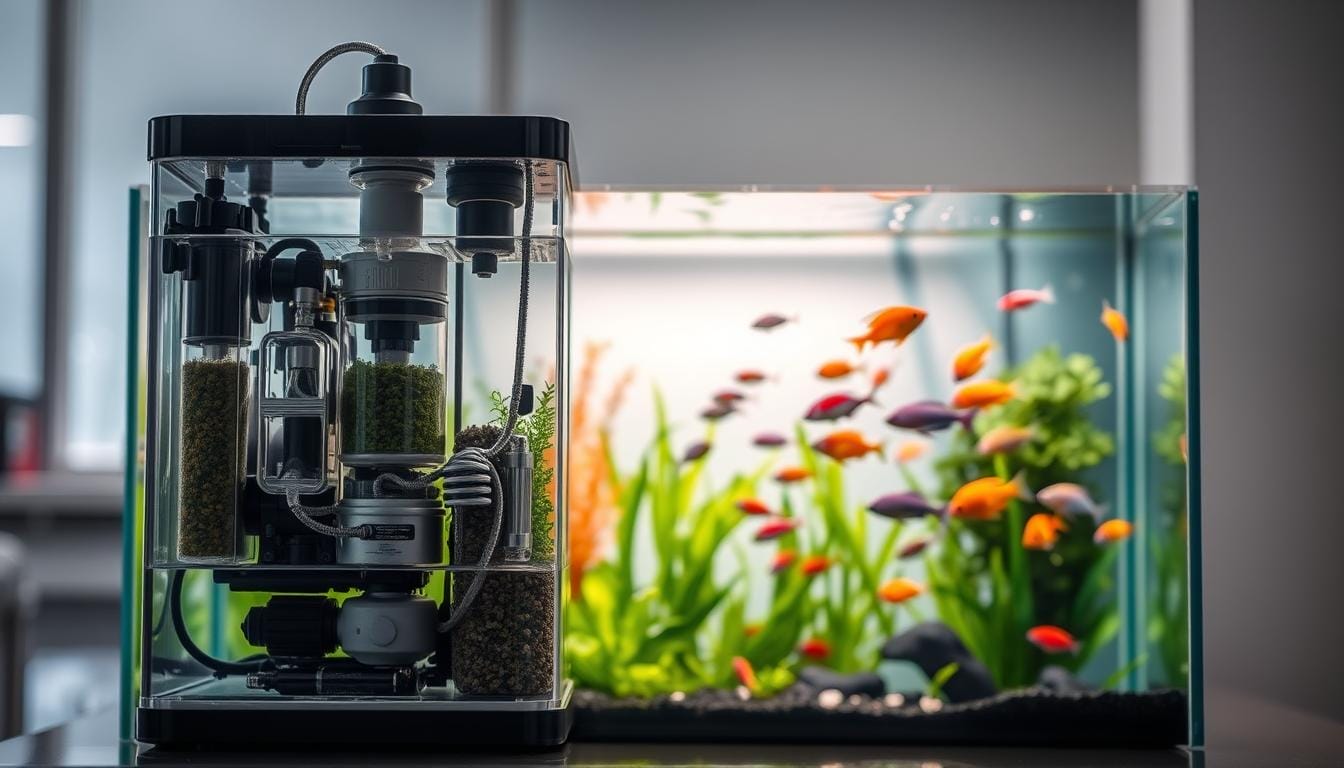
Did you know 90% of aquarium problems trace back to poor water quality? Your filter system isn’t just equipment—it’s the lifeline keeping your fish alive and vibrant. Without it, harmful toxins build up fast, turning your aquatic paradise into a danger zone.
Think of your aquarium as a miniature ecosystem. The right setup breaks down waste naturally, creating a safe space for fish to flourish. This process isn’t magic—it’s science working behind the scenes to protect your underwater friends.
You’ll discover how proper care transforms murky water into crystal-clear perfection. Learn why monitoring ammonia and nitrate levels matters more than you might realize. Tiny changes in your routine can mean the difference between stressed fish and thriving aquatic life.
This guide simplifies the complex science into actionable steps. We’ll show you how to choose equipment that fits your tank’s needs and maintain it effortlessly. By the end, you’ll create an environment where fish display their brightest colors and healthiest behaviors.
Understanding the Role of Filtration in Aquatic Systems
Your aquarium’s crystal-clear water reveals more than beauty—it’s a vital sign of your tank’s overall health. While sparkling surfaces and vibrant fish colors catch your eye, hidden processes beneath the surface determine whether your aquatic friends thrive or struggle.
The Importance of Water Quality
Clear, well-lit water does more than showcase your fish—it allows essential light penetration for plant growth and lets you spot potential issues early. But appearances can deceive. Even pristine-looking tanks harbor invisible threats like ammonia from:
- Fish waste breaking down
- Uneaten food decomposing
- Natural respiration processes
These everyday activities create a toxic environment if left unchecked. Ammonia concentrations as low as 0.5 ppm can damage gills within hours, starving fish of oxygen.
How Filtration Impacts Fish Health and Ecosystem Stability
Your filter acts like a silent guardian, housing beneficial bacteria that convert deadly ammonia into safer compounds. Without this biological workforce:
- Toxins accumulate rapidly
- Fish experience chronic stress
- Disease resistance plummets
Properly maintained systems create stability—fish display brighter colors, eat eagerly, and interact naturally. Test water weekly and watch for warning signs like surface gasping or faded scales to catch issues early.
Mastering Biological Filtration for Thriving Aquatic Life
The secret to a thriving tank isn’t just clean water—it’s a hidden ecosystem at work. Microscopic allies in your setup perform life-saving chemistry daily, turning invisible threats into harmless compounds.

Nature’s Water Purification System
Your filter media becomes a bustling colony of beneficial bacteria that feast on fish waste. These microbes break down toxic ammonia from fish gills and decomposing food, starting a chain reaction that keeps water safe. Unlike physical cleaning methods, this natural process tackles dangers you can’t see.
How the Nitrogen Cycle Protects Your Fish
Here’s what happens in your tank’s invisible cleanup system:
- Stage 1: Ammonia from waste turns into nitrites
- Stage 2: Nitrites convert to less harmful nitrates
- Stage 3: Plants absorb nitrates or you remove them through water changes
This three-step transformation relies entirely on bacterial activity. When balanced, your tank becomes self-cleaning—fish produce waste, microbes neutralize it, and plants use the leftovers. Test kits help monitor these levels, letting you catch imbalances before they harm your aquatic pets.
Healthy bacterial colonies grow best on porous surfaces like ceramic rings or sponge filters. Avoid overcleaning these areas—scrubbing them removes your tank’s essential workforce. With proper care, this living filter becomes your most reliable tool for maintaining crystal-clear water.
Key Components of an Effective Aquarium Filtration System
Your filter setup works like a home’s plumbing and waste management combined. Two main warriors battle different threats: mechanical media tackles visible gunk while biological allies handle invisible dangers. Let’s explore how these components team up to keep your water pristine.

Mechanical vs. Biological Filtration Media
Mechanical filtration acts as your tank’s first defense. These physical screens trap floating debris like fish waste and uneaten food. Think of them as nets catching particles before they decay. Rinse sponges or pads weekly—clogged media slows water flow and strains your pump.
Biological media serves as bacteria apartments. Porous surfaces give microbes space to colonize and break down toxins. Unlike mechanical types, you never scrub these—rough cleaning destroys your tank’s invisible cleanup crew.
Choosing Filter Media: From Bio-Balls to Ceramic Media
Surface area determines biological media’s power. Compare popular options:
- Plastic bio-balls: 0.32 m²/liter (budget-friendly starter option)
- Ceramic noodles: 93 m²/liter (mid-range performance)
- MarinePure spheres: 435 m²/liter (professional-grade efficiency)
Higher numbers mean more bacteria can thrive. Pair mechanical media like filter floss with ceramic rings for complete protection. This combo removes cloudy particles and neutralizes harmful chemicals—giving you clear water and happy fish.
Setting Up Your Aquarium Filtration: Step-by-Step Guide
Creating a healthy aquarium starts with proper filter setup—here’s how to get it right the first time. You’ll master the balance between mechanical efficiency and biological processes while keeping your aquatic friends safe.

Best Practices for Installing Filter Systems
Your filter’s power determines its effectiveness. Follow the golden rule: choose a pump that cycles all tank water 3-4 times hourly. For a 50-gallon tank, this means a minimum 150-gallon-per-hour (gph) capacity. Position intake tubes near waste-prone areas like feeding zones.
Establishing Beneficial Bacteria Cultures
Patience becomes your greatest ally here. These microscopic cleaners need 4-6 weeks to colonize surfaces. Start with 1-2 hardy fish to provide initial waste for bacteria growth. Test water weekly—safe ammonia and nitrite levels (
Integrating Chemical Media When Needed
Add activated carbon or phosphate removers only after bacterial colonies stabilize. Place chemical media in separate filter chambers to avoid disrupting microbial communities. Use these temporarily for odor control or medication removal.
Watch for these success signs:
- Consistent water clarity
- Stable pH and nitrate readings
- Active fish behavior during feeding
Internal Versus External Filters: Making the Right Choice
Your filter choice shapes both water quality and maintenance habits. Internal systems stay submerged, while external units operate outside the tank. Each option affects oxygen levels, debris removal, and how you interact with your aquatic environment.

Comparing Under Gravel, Sponge, and Canister Filters
Internal filters work best for smaller tanks or specific needs. Under gravel models pull water through substrate, trapping debris below. Sponge versions offer gentle water flow—ideal for fry tanks. Canister systems handle larger volumes but require more space inside the tank.
Consider these when choosing:
- Under gravel: Low-profile but harder to clean
- Sponge: Affordable and shrimp-safe
- Canister: Powerful for planted tanks
For detailed insights on internal aquarium filters, focus on your tank’s specific needs rather than one-size-fits-all solutions.
Advantages of External Power Filters and Wet/Dry Systems
External units shine in larger setups. Power filters use a pump to push water through mechanical and chemical media. Their removable design makes media swaps effortless. Wet/dry systems excel at oxygen exchange—their trickle design exposes filter media to air, preserving dissolved oxygen for fish.
Key benefits include:
- Simpler maintenance cycles
- Adjustable water flow rates
- Space-saving outside placement
Match your choice to fish population and tank size. Heavy-stocked tanks often need external systems, while nano setups thrive with internal options. Test water parameters weekly to confirm your filter’s effectiveness.
Expanding Filtration Techniques for Ponds and Larger Systems
Your pond’s health hinges on balancing visible care with unseen microbial allies. While aquariums rely on compact systems, ponds demand scaled-up solutions to handle higher waste loads and environmental factors.
Nature’s Hidden Workforce
Specialized pond filters use volcanic stones or sponge mats to create bacterial cities. These porous surfaces give microbes space to break down toxins from fish waste and decaying plants. Regular water testing ensures colonies thrive without getting overwhelmed by pollutants.
Advanced Cleanup Strategies
Pair mechanical skimmers with UVC systems for complete protection. Surface skimmers remove leaves and debris before they sink, while ultraviolet lights zap algae spores and harmful microbes. For murky water, flocculants clump floating particles for easy removal.
Key upgrades for pond owners:
- Choose bio-media with maximum surface area
- Position skimmers where debris accumulates
- Run UVC units only during algae seasons
With these techniques, your pond becomes a self-sustaining habitat where koi flash vibrant colors and plants grow lush. Monitor nitrate levels monthly and adjust filtration as your aquatic community evolves.
FAQ
How long does it take to establish a healthy bacteria colony in my filter?
It typically takes 4–6 weeks for beneficial bacteria to fully colonize your filter media. You can speed this up by adding seeded media from an established tank or using bacterial starter products. Regular water testing helps track progress!
Can live plants replace the need for biological filtration?
While plants absorb some toxins like nitrates, they can’t fully replace dedicated filter media. Combining plants with bio-media creates a balanced ecosystem, ensuring harmful ammonia and nitrites are consistently broken down.
Why does my filter media need rinsing, and how often should I clean it?
Gently rinse mechanical media (like sponges) in tank water monthly to remove debris without killing bacteria. Avoid cleaning biological media unless flow is blocked—scrubbing too hard disrupts the essential microbial communities.
What’s the difference between ceramic rings and bio-balls?
Ceramic rings have tiny pores that house more bacteria per square inch, ideal for compact setups. Bio-balls excel in wet/dry filters, maximizing oxygen exposure for faster toxin breakdown. Both work well—choose based on your filter type!
Do I need a separate filter for my outdoor pond?
Ponds benefit from specialized systems like skimmers or bead filters that handle larger debris and higher waste loads. Adding UVC clarifiers also helps control algae, ensuring clear water and healthier fish.
How do I know if my current setup isn’t handling the nitrogen cycle?
Cloudy water, lingering ammonia spikes, or stressed fish signal inadequate filtration. Test water parameters weekly and upgrade your media or increase flow if levels stay unstable. Small adjustments often make a big difference!
Can I mix mechanical and biological media in one filter?
Absolutely! Layering sponge (mechanical) before ceramic (biological) optimizes both debris removal and toxin processing. Just ensure water flows through mechanical media first to prevent clogs in the bio-media.
Will adding more fish overload my system?
Overstocking strains your filter’s capacity. Follow the “one inch of fish per gallon” rule as a starting point, and monitor ammonia/nitrite levels closely. Upgrade your filter or media volume if you plan to expand your aquatic family.

